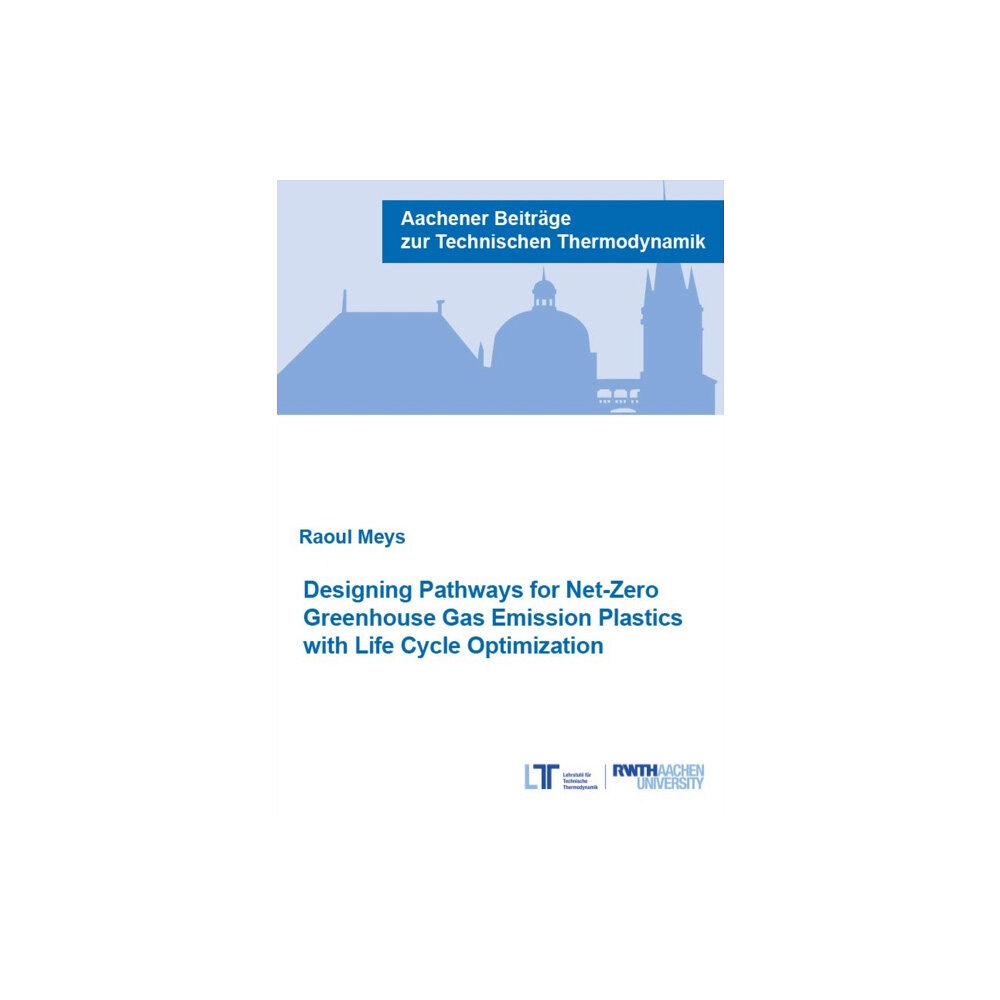- Hem
- Böcker
- Kurslitteratur
- Teknik, Industri & IT
- Designing Pathways for Net-Zero Greenhouse Gas Emission Plastics with Life Cycle Optimization (häftad, eng)

Designing Pathways for Net-Zero Greenhouse Gas Emission Plastics with Life Cycle Optimization (häftad, eng)
Plastics are on the rise to conquer every area of modern human life but lead to increased pollution of nature, enormous oil consumption, and...
569 kr
615 kr
Slut i lager
- Fri frakt
Fri frakt över 299:-
Snabb leverans
Alltid låga priser
Produktbeskrivning
Plastics are on the rise to conquer every area of modern human life but lead to increased pollution of nature, enormous oil consumption, and large-scale greenhouse gas emissions. Thus, to avoid climate change above 1.5?C, net-zero greenhouse gas emission plastics are needed by the second half of this century.
To reduce the greenhouse gas emissions associated with plastics, three circular technologies can be used: (1) chemical or mechanical recycling, (2) carbon capture and utilization, and (3) biomass utilization. However, current environmental assessments of these circular technologies focus solely on individual or partly combined circular technologies, are limited to regional scopes, and often apply inconsistent methodologies.
Thus, it is currently unclear if net-zero emission plastics can actually be achieved with the current set of circular technologies. Furthermore, shifting from the linear to a circular economy is regarded as energy-intensive and costly, hindering strong policy implementation from fostering the transition to a circular economy.
To assess if net-zero emission plastics can actually be achieved, this thesis builds and uses the first global, industry-wide and systematic bottom-up model for plastics production and waste treatment, representing the global life cycle greenhouse gas emissions of 90% of global plastic production.
Using that model reveals that net-zero emission plastics can be achieved by combining biomass and CO2 utilization with an effective recycling rate of 70% while saving up to to 53% of energy and 288 billion USD compared to a fossil-based benchmark applying large-scale carbon capture and storage.
Achieving the full potential of energy and cost savings while achieving netzero emissions requires the supply of biomass and CO2 at low cost, while cost of oil supply must be increased. To incentivize this shift, investment barriers for all available circular technologies have to be lowered by implementing consistent emission pricing schemes, using deposit systems for plastics to increase recyclability and stopping to subsidize fossil resources.
Thus, this thesis shows that the greenhouse gas emission problem of plastics can be solved with technologies and solutions already available today.
To reduce the greenhouse gas emissions associated with plastics, three circular technologies can be used: (1) chemical or mechanical recycling, (2) carbon capture and utilization, and (3) biomass utilization. However, current environmental assessments of these circular technologies focus solely on individual or partly combined circular technologies, are limited to regional scopes, and often apply inconsistent methodologies.
Thus, it is currently unclear if net-zero emission plastics can actually be achieved with the current set of circular technologies. Furthermore, shifting from the linear to a circular economy is regarded as energy-intensive and costly, hindering strong policy implementation from fostering the transition to a circular economy.
To assess if net-zero emission plastics can actually be achieved, this thesis builds and uses the first global, industry-wide and systematic bottom-up model for plastics production and waste treatment, representing the global life cycle greenhouse gas emissions of 90% of global plastic production.
Using that model reveals that net-zero emission plastics can be achieved by combining biomass and CO2 utilization with an effective recycling rate of 70% while saving up to to 53% of energy and 288 billion USD compared to a fossil-based benchmark applying large-scale carbon capture and storage.
Achieving the full potential of energy and cost savings while achieving netzero emissions requires the supply of biomass and CO2 at low cost, while cost of oil supply must be increased. To incentivize this shift, investment barriers for all available circular technologies have to be lowered by implementing consistent emission pricing schemes, using deposit systems for plastics to increase recyclability and stopping to subsidize fossil resources.
Thus, this thesis shows that the greenhouse gas emission problem of plastics can be solved with technologies and solutions already available today.
| Format | Häftad |
| Omfång | 286 sidor |
| Språk | Engelska |
| Förlag | Verlag G. Mainz |
| Utgivningsdatum | 2022-11-28 |
| ISBN | 9783958864634 |
Specifikation
Böcker
- Häftad, 286, Engelska, Verlag G. Mainz, 2022-11-28, 9783958864634
Leverans
Vi erbjuder flera smidiga leveransalternativ beroende på ditt postnummer, såsom Budbee Box, Early Bird, Instabox och DB Schenker. Vid köp över 299 kr är leveransen kostnadsfri, annars tillkommer en fraktavgift från 29 kr. Välj det alternativ som passar dig bäst för en bekväm leverans.
Betalning
Du kan betala tryggt och enkelt via Avarda med flera alternativ: Swish för snabb betalning, kortbetalning med VISA eller MasterCard, faktura med 30 dagars betalningstid, eller konto för flexibel delbetalning.
Specifikation
Böcker
- Format Häftad
- Antal sidor 286
- Språk Engelska
- Förlag Verlag G. Mainz
- Utgivningsdatum 2022-11-28
- ISBN 9783958864634
